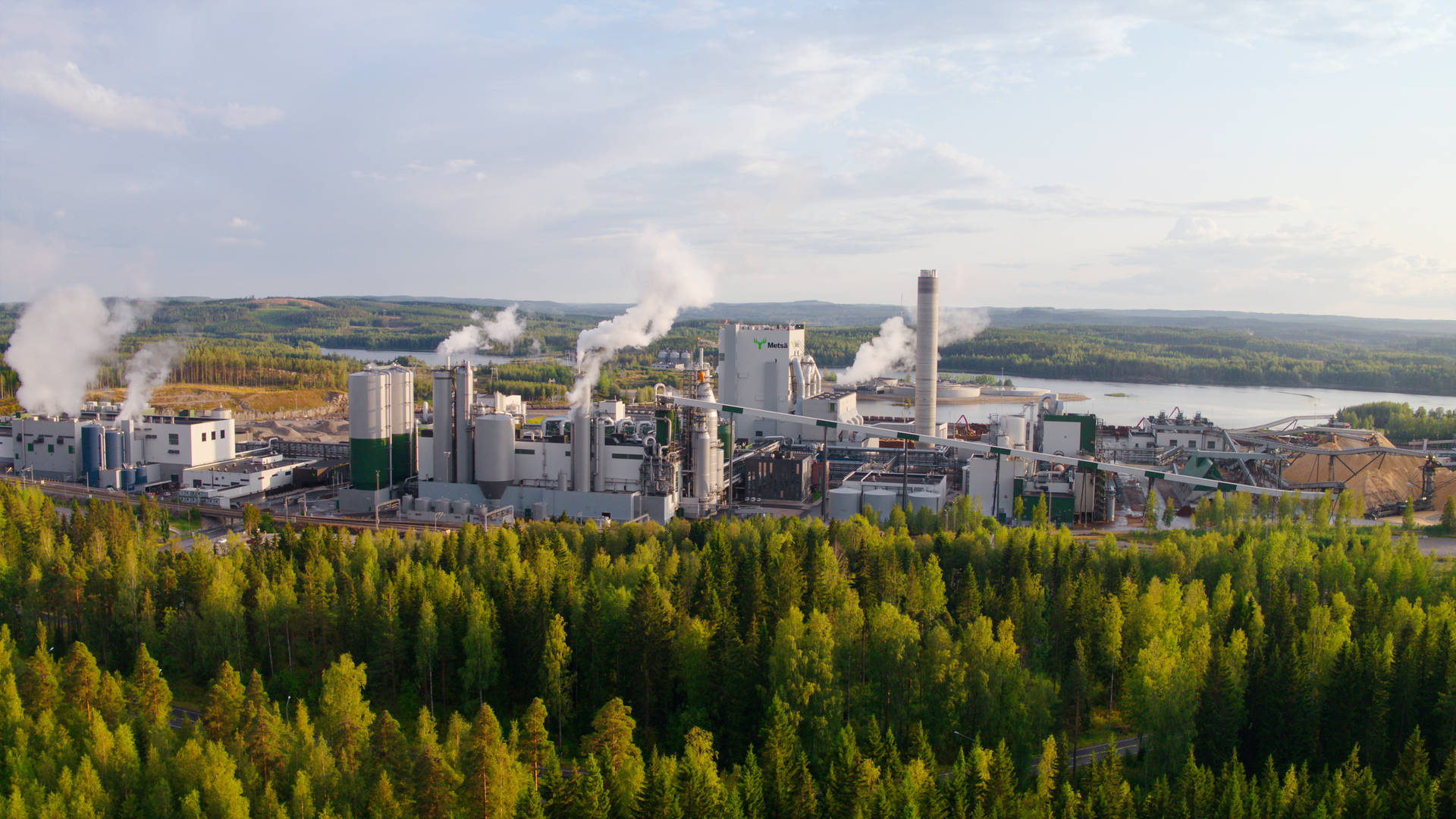When the bioproduct mill started up in 2017, it introduced a new way of thinking: industry was no longer seen as separate production units but as an ecosystem built on collaboration.
Today, several industrial operators work on the mill site, making use of the resources provided by the bioproduct mill. Together, they create new solutions, products and jobs and, above all, a more resource-wise industry. At the heart of this collaboration lies the principle that nothing goes to waste.
High-quality pulp production is the heart of the ecosystem
At Äänekoski, wood is refined into a wide range of products within the same industrial area. The bioproduct mill’s high-quality pulp production forms the foundation that enables the ecosystem’s innovations. The side streams and energy generated in the process provide raw materials and opportunities for other operators on the site.
The bioproduct mill is energy self-sufficient, generating electricity and heat for its own use, for other companies in the area, and for the national grid.
The pulp produced at the bioproduct mill is also used at Metsä Board’s paperboard mill, part of Metsä Group, which manufactures high-quality folding boxboard for consumer packaging worldwide. Metsä Wood’s veneer mill, located on the same site, uses steam from the bioproduct mill as an energy source and produces birch veneer for the construction and furniture industries. Innovations growing through collaboration
Innovations growing through collaboration
Metsä Group’s innovation company, Metsä Spring, develops new bioproducts in cooperation with domestic and international partners. In Äänekoski, Metsä Spring and Japan’s ITOCHU Corporation have built a demo plant producing Kuura™ textile fibre from pulp without using fossil fuels. The process utilises the steam, water and electricity generated by the bioproduct mill. The renewable, wood-based textile fibre can be used for clothing and various technical textiles.
Together with Valmet, Metsä Spring has also invested in a demo plant for wood-based 3D fibre products. The Muoto™ products manufactured there are renewable packaging solutions that replace fossil-based materials. This is a prime example of how wood can replace plastic in consumer products.
During 2025, the Äänekoski industrial ecosystem will expand once again as Metsä Fibre builds a demo plant for lignin upgrading next to the bioproduct mill. The project partners include technology company ANDRITZ and chemical company Dow. The demo plant will develop new bio-based products from lignin separated in pulp production, such as superplasticisers for concrete and gypsum applications.
The ecosystem will be further complemented by Metsä Wood’s new Kerto LVL mill, currently under construction and scheduled for completion at the end of 2026. Once operational, the mill will utilise steam from the bioproduct mill and produce high-value Kerto® LVL (laminated veneer lumber) for the construction sector.
A network powered by cooperation
Around the bioproduct mill, a close-knit network of companies has evolved, all utilising the mill’s energy and side streams in their own operations. Some partners are located directly within the bioproduct mill site, others just beyond its boundaries – all part of the same circular economy ecosystem.
Nouryon operates on the mill site and uses dried pulp from the bioproduct mill to produce carboxymethyl cellulose (CMC) – a sustainable, bio-based and water-soluble cellulose polymer used in a wide range of applications, from hygiene products and construction materials to food, pharmaceuticals and packaging. A raw material that only recently was part of a tree continues its journey into everyday products around the world.
Specialty Minerals Nordic utilises carbon dioxide recovered from the bioproduct mill’s flue gases to produce precipitated calcium carbonate (PCC). PCC is used as a filler and coating pigment in the paper and paperboard industry, and during its production the carbon dioxide is permanently bound into the product. This reduces emissions and returns industrial side streams back into the circular flow of the forest industry.
Veolia operates a biometanol plant within the mill area, which reached full-scale production in August 2025. The plant is the first of its kind in the world, refining raw methanol generated as a side stream of pulp production into commercial-grade biometanol. It can be used, for example, as a renewable transport fuel, and the process also produces bioethanol and ammonium sulphate as by-products.
Valio utilises district heat produced from the bioproduct mill’s surplus steam in its own production. The heat is transferred via a district heating network to Valio’s cheese plant in Äänekoski, where it is used in the production of the famous AURA® blue cheese. The industrial ecosystem can quite literally be seen on the dinner table.
Kekkilä, in turn, uses side streams from the bioproduct mill – such as ash, lime and residual wood material to produce fertilisers and growing media. The raw materials are transported by truck from the mill site to Kekkilä’s facilities, where they gain a new life in line with circular economy principles. Eventually, the nutrients return to the soil – from forest to forest.
Towards a fossil-free future
The Äänekoski bioproduct mill and its partners form a unique industrial ecosystem based on circular economy, resource efficiency and continuous development. More than ten industrial operators work on and around the mill site – each with their own strengths, yet united by a common goal: to use natural resources as wisely as possible and to create sustainable solutions for the future.
Infographic:
A unique network of industrial partners has developed around Metsä Fibre’s Äänekoski bioproduct mill, where companies from different industries utilise the mill’s energy and side streams in their own production.

